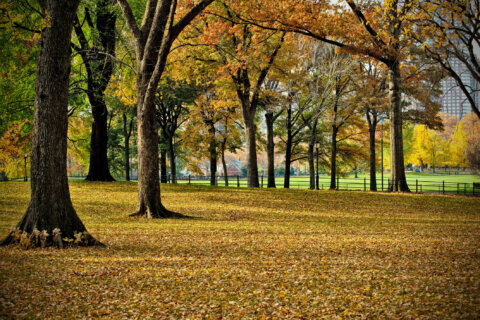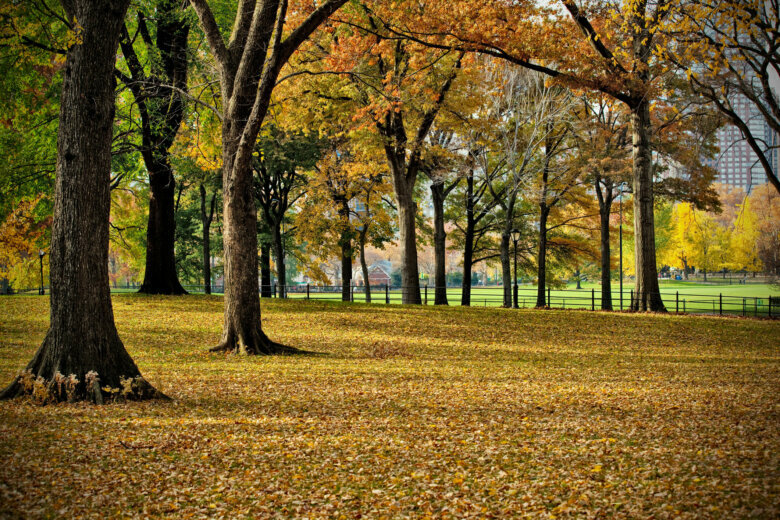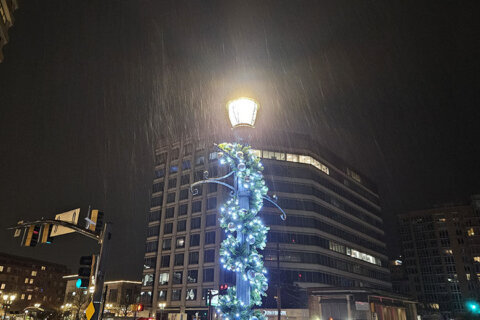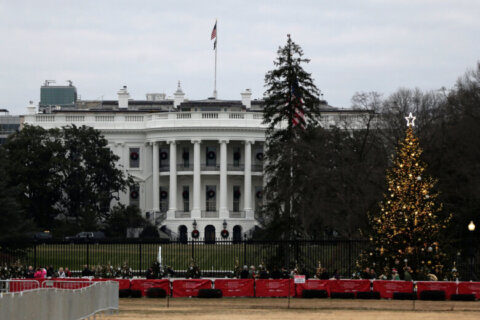
Fall ushers in cooler temperatures, pumpkin spice everything and beautiful fall foliage. And thousands of Americans seek those vibrant colored leaves by traveling notable distances to view them.
But geography doesn’t automatically prescribe vibrant colors — weather often plays a more important role. So where has the weather been conducive for good leaf peeping this year?
Perfect foliage conditions rely on a good combination of temperatures (not too hot and not too cold) and moisture (not too wet or too dry). The problem is that some areas have experienced these extreme conditions, particularly in the West and New England.
Why drought matters
Over 75% of the West is under drought conditions. Over 80% of Massachusetts, Maine, Rhode Island and New Hampshire is experiencing severe drought.
But some of those same New England areas witnessing drought conditions also happen to be reporting more vivid fall colors.
“This year we are seeing exceptionally vibrant fall foliage in Vermont,” said Dr. William Keeton, a forest ecology and forestry professor at the University of Vermont. “It is due to a combination of factors, including good tree growth last year, mild drought and both warm days and cool nights over the last month. ”
While the drought may trigger more vibrant colors, the timing may be premature.
“The colors this year are coming about two weeks earlier than normal and will probably go by fast and furiously,” Keeton said. “Largely, this is because the drought creates stress for the trees — physiological stress. So from that standpoint, while the drought may enhance some of the colors, the stress is not a good thing and may be a harbinger of things to come with climate change.”
In addition to starting early, the duration of the leaf color is also likely impacted.
“In terms of fall foliage, drought can cause the leaves to change colors earlier, but they may also die and fall off earlier,” said Kaitlyn Weber, a data analyst for Climate Central. “Prolonged and more extreme drought can cause physical damage to trees such as root loss, slowed growth, and makes it harder for trees to protect themselves against pests and disease.”
Which is why the level of drought matters too.
Vermont, for example, is mostly in a moderate drought (level 1 out of 4), versus New Hampshire, Massachusetts and Maine, which are mostly in a severe drought (level 2 out of 4). And Rhode Island is almost entirely under an extreme drought (level 3 out of 4).
“A mild to moderate drought may actually enhance fall foliage to some degree, so long as it didn’t lead to a lot of ‘browning’ or early leaf drop,” Keeton said. “Then again, drought one year may mean less robust leaf production the next.”
So it isn’t always an instant impact. Often, the effects of droughts are delayed. Right now, 76% of Vermont is under moderate drought conditions or worse. But at this same time last year, 0% of the state was under drought conditions.
“Good tree growth last year allowed the trees to store up energy reserves and nutrients over the winter, resulting in robust leaf development this spring and summer,” Keeton said. “But this works the other way too…a bad drought one year can lead to poorer foliage the next.”
Extreme heat and climate change
Ideal conditions for vibrant foliage include warm days and cool nights. That encourages the production of a chemical called anthocyanin, which adds the red and purple colors in some species, like maples.
“The contrasting temperature between night and day speeds up the loss of chlorophyll from leaves, leaving behind the secondary photosynthetic pigments (carotenoids) that give us the yellow and orange colors,” Keeton said.
However, just like a drought, severe heat can stress trees enough to cause early browning or loss of leaves. And moderate heat, or prolonged heat — when fall feels more like an extension of summer — can delay the change to fall colors, because the trees aren’t getting the signal that fall has arrived.
“It’s also possible for plants to miss the cue altogether and lose their leaves quicker,” Weber said.
The period from June through August this year was the fourth hottest on record in the US, according to the National Oceanic and Atmospheric Administration.
Western states like Colorado and New Mexico often see a tourism boost as travelers seek out the vivid leaves of aspen and scrub oak trees. Both of those states, along with Nevada and Utah, had their hottest August on record this year. New Mexico had its second driest summer (June through August) on record.
“The causes of fall foliage are complex and actually not entirely understood,” Keeton said. “Drought is only one of several factors, the others being photoperiod and the contrast between daytime and nighttime temperatures in autumn. All of this just goes to show how fascinating our forest ecosystems are!”
Wildfires add another obstacle/dilemma
Wildfires will also complicate leaf peeping in Colorado and California this year. Several states are still dealing with poor air quality and hazy skies from the smoke. That haze will block your ability to see the vibrant colors.
“Currently all National Forests in the Pacific Southwest Region are closed to the public by order. There are few exceptions to these orders,” according to the US Department of Agriculture Forest Services website.
Inyo National Forest in California is closed until October 8 due to the ongoing wildfires in the region. However, the conditions remain fluid as the wildfires shift or become contained, so check each park’s website to see if they have re-opened.
How does it look in your area? You can use this foliage tracker to see how each portion of the country is doing.








